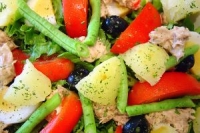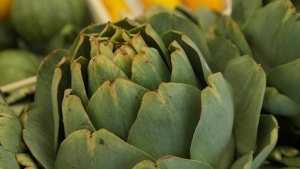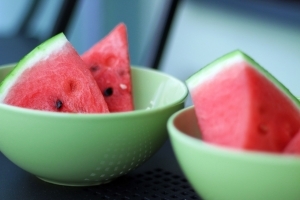Msakhan (Palestinian grilled chicken) with taboon bread and toasted pine nuts
Msakhan
Adapted from THE PALESTINIAN TABLE by Reem Kassis
Preparation Time: 30 minutes / Cooking Time: 1 hour
Serves: 8
If there is one dish that is exclusively Palestinian, it's msakhan. The key to msakhan is simple, good ingredients, cooked well. For me, and even more so my brother, this dish is associated with Teta Fatmeh. So much so in fact, that one summer, when my brother was two years old and we went with some friends to a restaurant in Jericho, he threw a tantrum when he saw the food arriving, crying that he only wanted "Teta Fatima's msakhan". While neither of us throws tantrums over msakhan anymore, we still associate this dish with her.
Ingredients
For the chicken
- 8 skin-on, bone-in chicken legs or
- breasts
- 3 tablespoons olive oil
- 1 teaspoon Nine Spice Mix (see recipe here)
- 1 teaspoon sumac
- 1/2 teaspoon salt
For the flatbreads
- ¾ cup (6 fl oz/175 ml) olive oil
- 8 onions, coarsely diced
- 1 tablespoon salt
- 1-2 tablespoons sumac
- 1 tablespoon ground cumin
- 2 teaspoons Nine Spice Mix
- 8 Taboon Breads (see below), 8 inches/20 cm in diameter
To serve
- 4 tablespoons sumac
- 1 quantity Toasted Pine Nuts (page 31)
- olives
For the maftool
- 1 tablespoon olive oil
- 1 tablespoon butter
- 1 lb 2 oz/500 g maftool (see note)
Method
Preheat the oven to 375°F/190°C/Gas Mark 5.
Put the chicken into a large roasting pan and top with the olive oil, spices, and salt. Give it a good rub with your hands, making sure to get some of the marinade under the skin,
then arrange the pieces skin side up and place in the oven while you prepare the onions. The chicken will take about 1 hour in the oven to fully cook.
Meanwhile, put the olive oil, onions, salt, and spices into a large skillet (frying pan) over low heat. Cook for 30-40 minutes, stirring occasionally, until the onions have softened
and cooked completely. If the onions seem dry or do not release water during cooking, add in a few tablespoons of water. When done remove from heat and set aside.
Check on the chicken, and if done, remove from the oven and allow to rest for 15 minutes, loosely covered in aluminum foil. Pour any juices in the roasting pan over the onion mixture and toss to combine.
Preheat the broiler (grill). To assemble, dip the edges of each bread in the oil on the surface of the onion mixture then lay flat on an baking sheet. Place enough onion mixture on each bread to cover it completely but leave a border around the edge (similar to a pizza). Sprinkle with sumac and toasted pine nuts. Continue, until all the breads are completed.
Taking one or two flatbreads at a time, put on an oven rack and place under the broiler for 2-5 minutes to brown the edges and the onions. Remove, top each flatbread with
a piece of chicken, and serve.
Note: Taboon bread is best for this dish, but if you do not want to make it at home, you can substitute with a sturdy store-bought flatbread, like naan or Greek pita bread.
TABOON BREAD
Adapted from THE PALESTINIAN TABLE by Reem Kassis
The taboon is a clay oven that has been used for cooking and baking bread in the Middle East since pre-biblical times. Many people use a bread oven or a good oven tray with pebbles at the bottom of it to give the bread its traditional shape, but you can place the bread directly in an oven tray and make indentations in the dough with your fingers before baking. This is used for Chicken, Onion, and Sumac Flatbreads (page 194), one of Palestine's national dishes.
Preparation Time: 30 minutes + resting / Cooking Time: 5-10 minutes
Serves: 8
Ingredients
- 4½ cups (1 lb 2 oz/500 g) all-purpose (plain) flour, plus extra for dusting
- 2¼ cups (9 oz/250 g) fine whole wheat (wholemeal) flour
- 2 teaspoons salt
- 1 teaspoon sugar
- 2 tablespoons olive oil
- 1 tablespoon active dry (fast-action) yeast
- 2-3¾ cups (18-30 fl oz/500-900 ml) warm water
Method
Put the flours, salt, and sugar into a large bowl and mix together. Make a well in the middle and add the oil, yeast, and 2 cups (18 fl oz/500 ml) of the warm water. Mix through with your fingers, gradually adding more water and kneading until the dough comes together. If the mixture feels sticky, leave for 5 minutes then come back and knead again. Repeat this once or twice until you have a very soft ball of dough.
Alternatively, combine ingredients, starting with 2 cups (18 fl oz/500 ml) of water, in the bowl of a freestanding mixer fitted with the dough hook and mix on medium speed.
Gradually add more water as necessary, until the dough comes together in a very soft ball. The dough should be a bit sticky, so use plenty of flour when shaping.
Shape the dough into a ball, rub all over with oil, cover the bowl with a damp dish towel or plastic wrap (clingfilm), and set aside until it doubles in size, about 1 hour. Once
the dough has risen, gently punch down to release the air bubbles. Divide into 8 portions, shaping into a ball and place on a floured work surface. Set aside to rest for 15 minutes.
Meanwhile, preheat the oven to 475°F/240°C/Gas Mark 9 (or the hottest it will go) with the oven tray and bone-dry pebbles, if using. Take one piece of dough, flatten it out on
the floured work surface, and coat in more flour. Use your hands to flatten and stretch it out to 4-6 inches/10-15 cm in diameter. Sprinkle with flour, flip, and continue to flatten out until you have a circle 8-12 inches/20-30 cm in diameter.
If using pebbles, open the oven and pull the oven tray out halfway. Carry the dough between your hands to the oven and lay it over the pebbles, stretching it out slightly into a circular shape. If placing directly on the tray, do not stretch out but use your fingers to make indentations. This will give it a similar shape to having pebbles under it.
Bake for 5-10 minutes, or until the bread develops a light golden top. Remove from the oven and place on a paper towel lined tray to cool. Repeat with the remaining dough.
Store covered for up to 1 day or freeze for several weeks.
TOASTED PINE NUTS OR ALMONDS
Adapted from THE PALESTINIAN TABLE by Reem Kassis
Toasted nuts are one of my guilty pleasures. They add so much texture to food and there are very few dishes that aren't enhanced by their presence. You can use them to decorate any rice dish or casserole, you can mix them with stuffings, you can sprinkle them on salads, you can even eat them alone. I generally fry them in olive oil, although any vegetable oil, and even butter, will do. Make sure you remove the pan from the stove when they are one shade lighter than you need because they will continue to cook and darken for a short while after.
Preparation Time: 5 minutes / Cooking Time: 5 minutes
Makes: 1 cup (4 oz/120 g)
Ingredients
- 1 cup (4 oz/120 g) pine nuts or flaked almonds (do not fry both together as timing is different)
- vegetable oil or butter, for frying
Method
Place a small skillet (frying pan) over medium-high heat and pour in enough oil to coat the bottom, around 1 tablespoon.
Add the nuts and stir to coat evenly with the oil. Lower the heat and continue to stir until the nuts are a very light golden color.
Remove the pan from heat and drain the nuts onto a plate lined with paper towels. You can use immediately or, once cooled, store in an airtight container in the refrigerator for
up to 2 weeks.
Note: Pine nuts are perfect when mixed with foods such as Spiced Lamb and Rice Pilaf (page 166), Freekeh Pilaf with Lamb and Pine Nuts (page 162), and Lamb with Onion and Spices (page 30) as they retain their crunch. Almonds, however, tend to lose their crunch when mixed so it's best to sprinkle them on top of dishes before serving.


